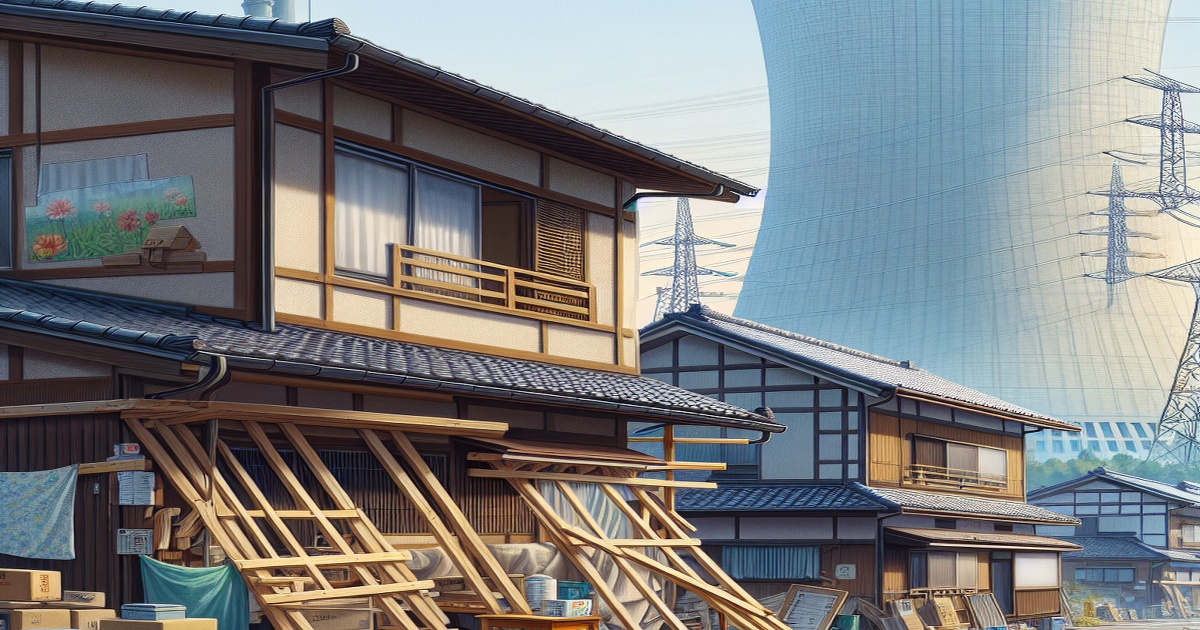On January 1, 2024, the Noto Peninsula earthquake struck the Togi area of Shika town in Ishikawa Prefecture, causing houses to collapse near a local nuclear power plant. This disaster has highlighted a broader issue identified by a survey that evaluated earthquake-resistant housing in municipalities located within 30 kilometers of 15 nuclear facilities across Japan.
The analysis revealed that nearly 80 percent of these municipalities have a proportion of earthquake-resistant homes that falls below the national average of 87 percent. Data collected from 2003 to 2024 by various municipalities showed that out of 122 areas examined—excluding the decommissioned Fukushima No. 1 and No. 2 plants—95 had lower rates of homes built or reinforced under the “new seismic standards,” a benchmark designed to endure powerful quakes with intensities in the upper 6 to 7 range on Japan’s seismic scale.
In regions close to potential nuclear disaster sites, such as those within 30 kilometers of a power plant, the low prevalence of earthquake-resistant structures could hinder effective evacuation or sheltering. Following the 2011 Fukushima incident, emergency preparedness guidelines were established, requiring residents within 5 kilometers of a plant to evacuate immediately during a general emergency, while those in the 5-to-30-kilometer band should shelter indoors until radiation levels decrease. However, the damage inflicted by the recent earthquake underscores the significant challenges that could arise if a major seismic event coincides with a nuclear accident.
The survey also pointed to notable regional disparities. For example, municipalities around the Shika nuclear power plant displayed some of the lowest rates, with towns like Anamizu and cities like Wajima reporting figures below 50 percent. In contrast, areas like Shizuoka Prefecture, which faces the threat of a potential Nankai Trough megaquake, show much higher rates of earthquake-resistant housing.
Experts emphasize that bolstering earthquake resistance is essential to disaster preparedness. They caution that even homes compliant with the new standards may not endure repeated strong earthquakes, underscoring the need for continued improvements in both general and nuclear-specific disaster planning.







8 Comments
Fuerza
“The text rightly points out that even modern safety standards may not be enough for repeated quakes.”
Manolo Noriega
“A wake-up call for local governments to step up safety measures. This analysis is both timely and necessary.”
Fuerza
“It’s high time that communities near nuclear sites invest more in stronger, earthquake-resistant structures.”
Ongania
“By linking building standards to potential nuclear disasters, the article underscores a critical, underrated risk.”
Fuerza
“This article sheds light on a critical issue – the need for more earthquake-resistant housing near sensitive sites is a must.”
Raphael
“I support efforts to revise and enhance building codes. We must learn from past events to build a safer future.”
Leonardo
“Great analysis – it clearly identifies gaps in our current safety infrastructure and calls for improvement.”
Michelangelo
“The survey data is crucial. Knowing that 80% of municipalities fall below the national average is a red flag.”